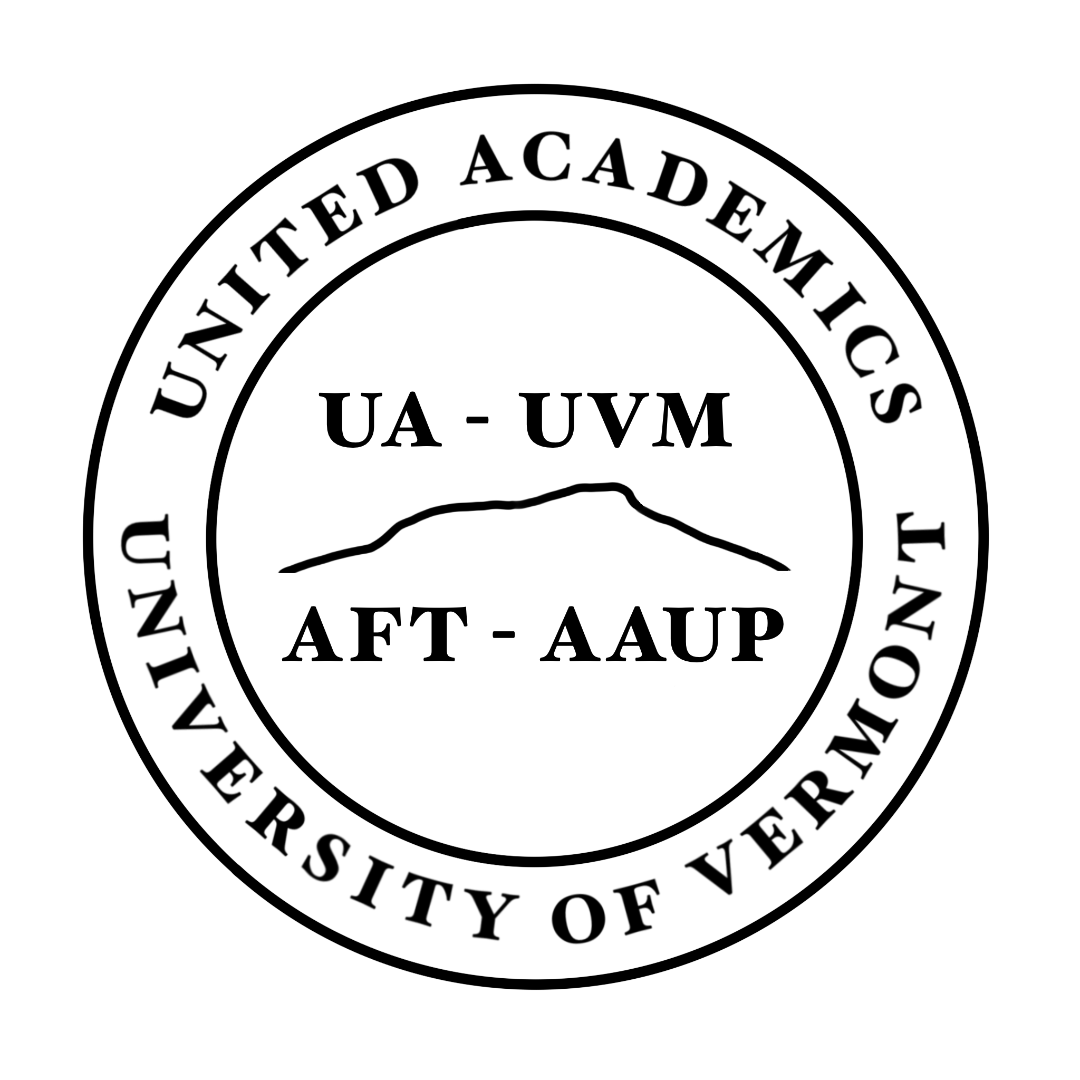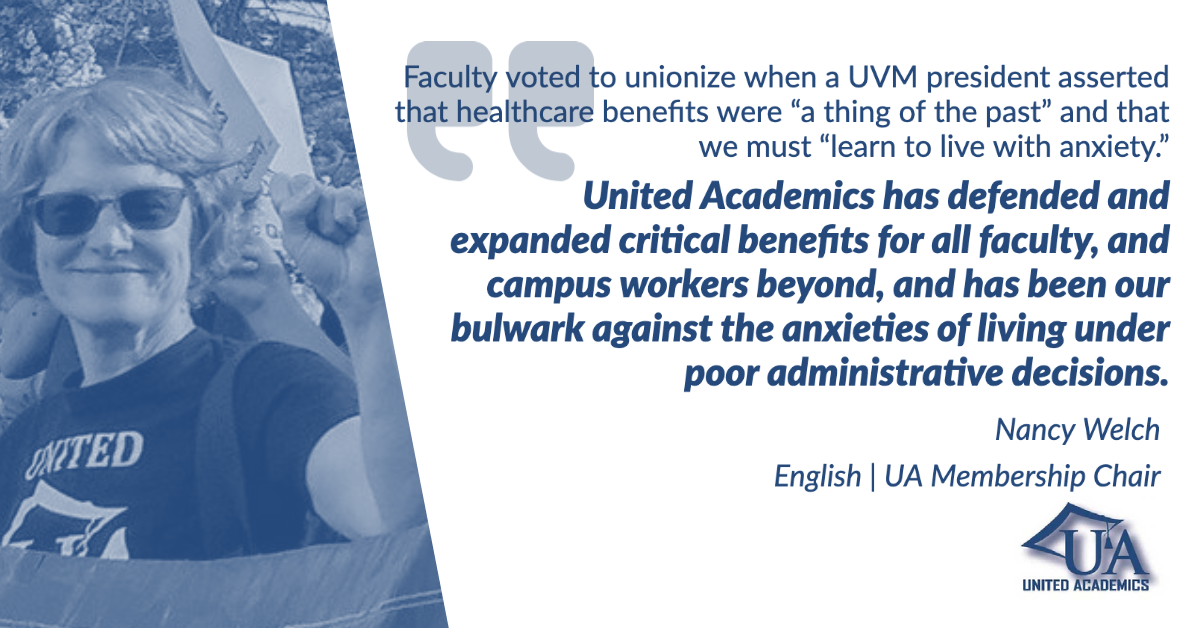How UA has made UVM a better place to work, learn, and research
When a union becomes established and part of the lay of the land, it is easy to forget what differences a union actually makes. When people start taking a union for granted, its benefits can become invisible.
Here’s a small example: early on in the life of UA, a faculty member received an outside offer for a higher salary. They went to their Dean, who in an email offered a modest salary boost as a counter-offer, and the faculty member turned down the outside offer. But shortly thereafter the Dean came back and said they couldn’t provide the promised salary boost after all because of budgetary constraints. Before the union, the faculty member’s only recourse would have been to hire an expensive lawyer, who would likely have cost more than the raise would have provided. With the union in place, however, an email to the contract administration committee led to the counter-offer being restored within a couple of days.
Today, no Dean would be likely to try to wiggle out of a legally binding agreement, because they know there are rules enforceable with the help of the union. There’s a lot about a union that prevents bad things from happening; it’s important to remember that sometimes when things don’t happen, that’s a good thing.
What follows is a list of just a few of the many ways UA has made the University of Vermont a better institution. (This is a work in progress, so stay tuned as we add more details.)
guaranteed promotion raises of 9-11%
Before the first UA contract, it was not uncommon for faculty promoted to associate to receive no promotion bump and a near-inflation raise. Under the contract with UA, that is no longer possible. Currently, tenure track full time faculty receive 9.25% upon promotion to associate and 11% upon promotion to full. This ensures that merit is properly rewarded according to criteria determined by disciplines and under the guidance of rigorous external peer review, rather than administrative whim. And because raises are cumulative, over a faculty member’s career, promotion bumps can have a more substantial effect on salary than annual salary raises. (The graph at right shows a hypothetical comparison between raises with and without promotion bumps, the former leading to greater than $100K more total accumulated income over a ten year span.)
protection of sabbatical benefits
Since our first contract, sabbatical leave policies at public universities have been under assault around the country. UA has successfully protected our 77.3% pay for full year sabbaticals because they can be so crucial to faculty research and development. Faculty at most neighboring public universities (e.g., Univ. of Massachusetts Amherst) receive only 50% pay for a full year, and in most past negotiations, UVM’s administration has tried to force similar terms on us. Without the union, they almost certainly would have reduced sabbatical pay, because they would have the power to take back sabbatical support unilaterally.
consistently better raises than before unionization
Better salaries do not just make lives better for individual faculty. Better salaries make for better recruitment and retention of quality faculty, raising the research profile and overall reputation of the university, which has an effect on the number and quality of admissions. While the U.S. News and World Report College rankings have their limits, UVM’s standings in the rankings track fairly closely to UVM’s salaries compared to other universities. Better salaries allow UVM to live up to its full potential in research, scholarship, and as a proponent of the life of the mind. UVM is especially dependent on out of state tuition revenues for its survival, and if salaries drop, over time, so will our ability to attract out of state students.



